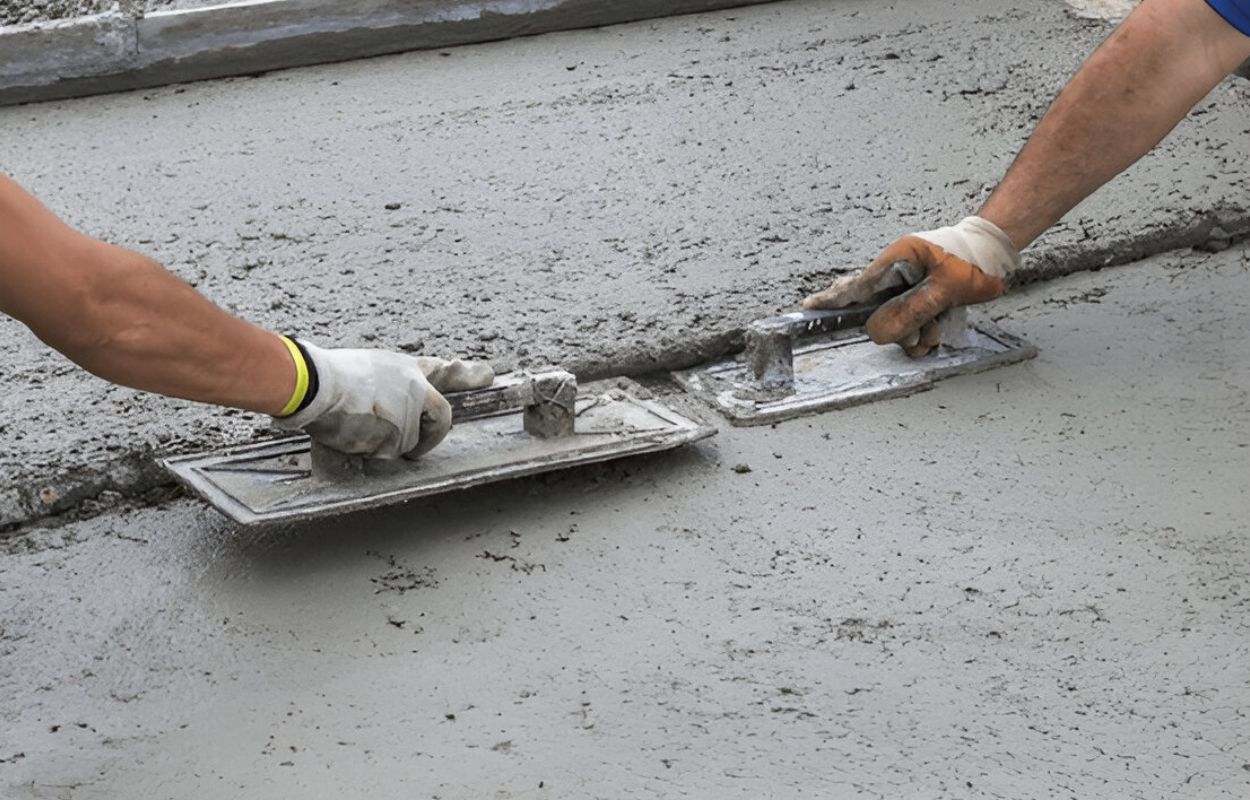We’ve all seen it before – that concrete driveway, patio, or garage floor that’s just NOT LOOKING RIGHT. We’ve been called out to inspect many concrete surfaces over the years.
And we’re here to share our expertise on how YOU can spot concrete deterioration early, and know when it’s time to call in the pros for repair.
Common signs of concrete deterioration to watch for
Concrete is tough, but it’s not invincible! Over time, the elements can take their toll. Here are the key signs of wear and tear to keep an eye out for:

Visible cracks
Do you see lines, gaps, or fissures snaking across your concrete? Cracks are one of the MOST OBVIOUS signs that your surface is in distress. Some are hairline and superficial, while others are deep and wide. Either way, cracks allow water to seep in and do further damage, so they need to be addressed.
Uneven surfaces
Does your concrete look more like a mogul ski course than a smooth, flat plane? Uneven surfaces are not just unsightly, they’re a tripping hazard too. If you see noticeable dips, raised sections, or an uneven profile, that’s a red flag.
Water pooling
Next time it rains, go check on your concrete. Does water flow off it like it’s supposed to? Or are puddles lingering long after the clouds part? Pooling water is a sign that the surface isn’t draining properly. Those pools speed up deterioration, so you want to get that fixed.
Spalling
Spalling is a fancy word for the pits, flakes, and pop outs that appear in concrete surfaces over time. If you see what looks like little craters or divots in the concrete, that’s spalling. It’s a sign that the top layer is starting to erode away.
Discoloration
Is your concrete not quite the right shade of gray anymore? Discoloration, stains, and fading can signal chemical damage and general aging of the concrete. If it looks dirty even after a good cleaning, take a closer look.
Surface flaking
Run your hand over the concrete. Does it feel rough? Rub off on your skin? Concrete should be smooth to the touch. If you’re seeing what looks like surface flakes coming loose, that’s a process called scaling. Scaling concrete WILL NOT get better on its own and requires repair.
Structural issues that point to concrete problems
Sometimes the signs of deteriorating concrete show up INSIDE your home or building. Keep an eye out for:
Sticking windows and doors
Do you feel like you have to wrestle with your windows and doors lately? Concrete settling can throw your door and window frames out of whack, making them suddenly harder to open and close. Don’t force it – get your concrete checked.
Sloping or sagging floors
Are your floors starting to resemble a skatepark? Dips, saggy spots, or sloping floors can point to concrete settlement issues and voids below the surface. If you drop a marble on the floor, which way does it roll? Sloping floors are NOT something to ignore.
The big question: How urgent are concrete repairs?
You might be tempted to put off concrete repairs, especially if the damage seems minor. But the thing is, concrete deterioration is a PROGRESSIVE problem. It starts small, but it will get worse over time. The longer you wait, the more extensive (and expensive!) the repair will likely be.
Leaving concrete damage unaddressed can also create SAFETY HAZARDS. Uneven surfaces and potholes are a major tripping risk. Cracks allow water infiltration, which can lead to mold and foundation issues. So if you see signs of concrete distress, it’s best to call a professional Plano concrete contractor like us sooner rather than later. We can assess the damage and recommend the most cost-effective repair solution.
Be proactive: Maintenance tips to extend concrete life
While some concrete deterioration is inevitable over time, you CAN take steps to slow the aging process. Adopt these maintenance practices:
Clean regularly
Sweep and wash your concrete surfaces regularly to prevent dirt, grime, and de-icing salts from building up and eating away at the surface. A little elbow grease goes a long way.
Seal and waterproof
Applying a high-quality concrete sealant every few years can help REPEL water and stains to protect your surfaces. It’s one of the BEST preventive steps you can take.
Mind your landscaping
Make sure any nearby landscaping elements, like trees, shrubs, and gardens, are not Impacting your concrete. Roots, fertilizer runoff, and excess watering can all accelerate deterioration.
Catch spills quickly
If you spill oil, paint, grease, or other compounds on your concrete, try to clean it up promptly. Many chemicals react with the concrete and cause permanent stains or erosion.
Bring in the concrete repair pros
Even with the best of care, concrete surfaces will eventually need some TLC. If your DIY efforts aren’t cutting it anymore, it’s time to call a specialist.
A professional Plano concrete contractor like us can provide an expert assessment, identify the root causes of any damage, and lay out your repair or replacement options. We have the tools, techniques, and know-how to get your concrete surfaces back in top form.
DON’T HESITATE to reach out if you have any concrete concerns. It’s what we’re here for! The sooner we can intervene, the better we can protect your valuable concrete surfaces – and your property as a whole.
